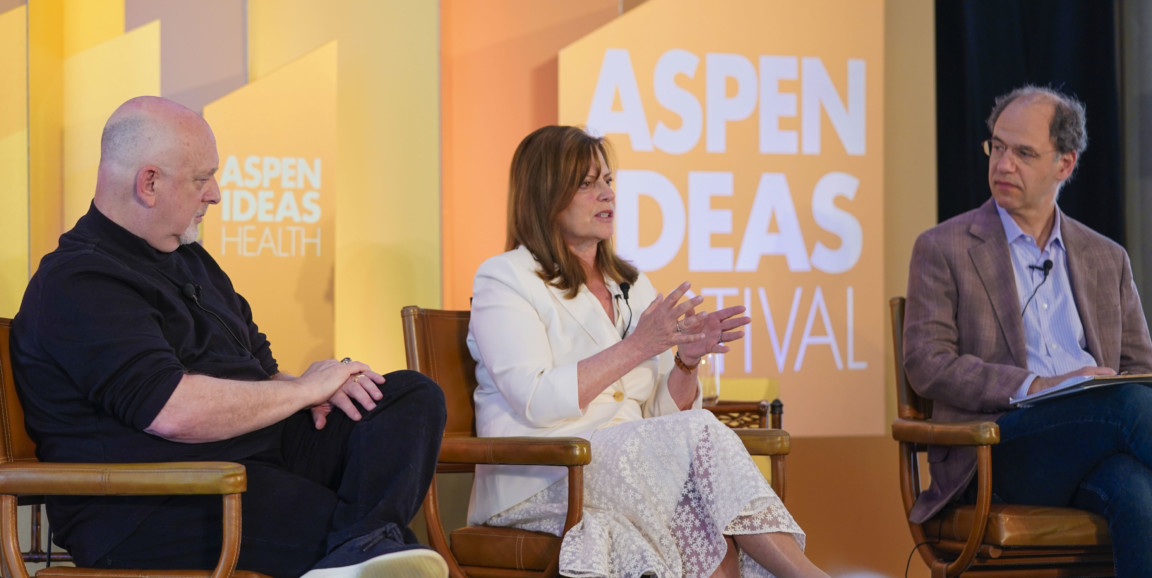As life expectancy steadily increases worldwide and the number of aging Americans overtakes the number of youth, some experts are asking: how do we prepare for a 100-year-long life, and what will that life look like?
Susan Golden, PhD, with the Stanford Center on Longevity and dciX (part of the Stanford Distinguished Careers Institute) argues that emphasis on healthy lifestyles from a young age can make a massive difference and help "embed prevention into the system." With a background in biotech and public health, Golden is now focused on social innovations that can significantly change the way we spend the second 50 years of our lives.
The first step, Golden explained in an interview, is to enhance the role of primary-care physicians from a young age. Pediatricians can be thought of as "navigators" who can help children develop a lifestyle that will continue to benefit them 80 years later. Educators can also take action to significantly improve health and quality of life for people of all ages by incentivizing exercise and healthy habits. Workplaces can provide similar incentives for adult employees (Stanford's BeWell program is an example).
Among the middle-aged and elderly, social isolation is one of the greatest risk factors for frailty; studies show that loneliness can be as damaging to cardiovascular health as smoking 15 cigarettes a day. Golden recommends that communities prioritize non-age-segregated spaces and activities. Some older adults, she points out, are renting out rooms to students at affordable rates, which spawns friendship and understanding between age groups.
An example is Boston's Beacon Hill Village program, which encourages the elderly to live in close proximity, form mutual support networks, and pool resources. Outside of school and the workplace, making friends and connections can be very difficult for older adults, Golden pointed out. Housing communities and shared workspaces will be critical to combat social isolation among retirees.
Changing the way we view personal finance can also help older adults fund a meaningful and independent life after retirement, and relieve the national burden of supporting an increasing number of elderly citizens. Golden argues that traditional definitions of a career as a single job held until age 65, followed by about 15 years of increasing inactivity, need to shift drastically.
She said that future 80-year-olds can expect to have more of a "portfolio" lifestyle, with changing interests and careers/hobbies over time. Golden emphasizes that continued education should become the norm, as four years of college don't provide enough stimulation for a 100-year life (Stanford offers continuing education classes and the Distinguished Careers Institute to help adults decide how to use the next 30-plus years of their lives).
She points out that digital literacy -- required for efficient banking, shopping and more -- is a significant educational gap that needs to be addressed. Countries like Denmark and Israel offer free national digital literacy programs for older adults; near Stanford, the Avenidas program offers digital training to elders in Palo Alto. Golden hopes such programs will become widespread.
I asked Golden what I as 20-something could expect my own life to look like at 80 years old, if we as a society embrace her prescriptions for longevity. Her answer: there will cease to be one prototypical 80 year old. We shouldn't dread the last 30 years of our lives, imagining ourselves socially siloed with other retirees, inactive and unstimulated. Rather, we can expect to socialize inter-generationally and participate actively in our communities, and to be financially independent and productively occupied.
With increased life expectancy, says Golden, "We've been given a gift of 30 years." It's up to us to plan for and reflect on how we are going to use that gift.
Photo of Susan Golden, center, courtesy of the Aspen Institute/ Riccardo Savi




